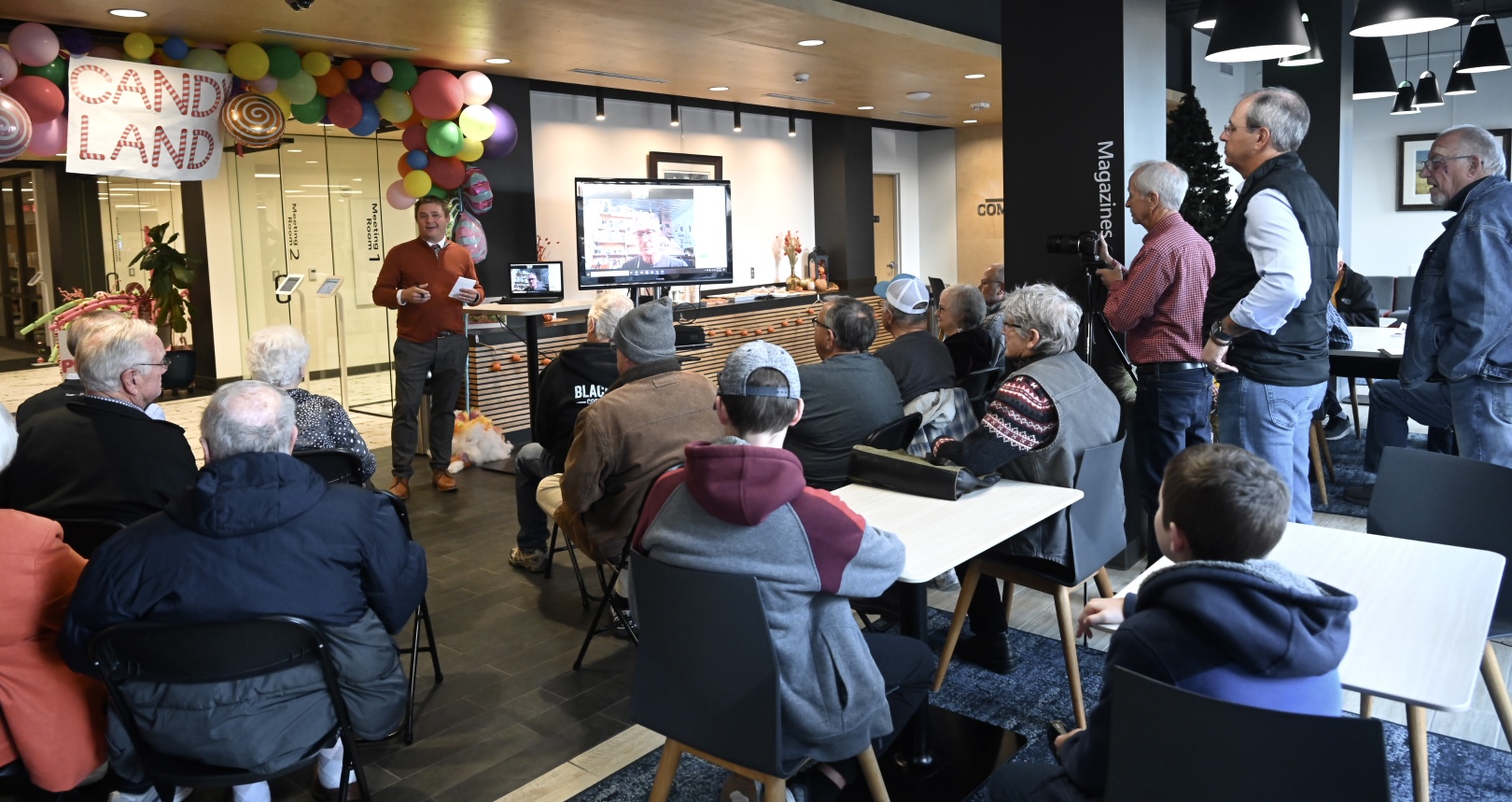By RORY MOORE
Tiger Media Network
A bronze sculpture of Catherine the Great, the Empress of Russia from 1762 to 1796, was unveiled at the Hays Public Library on Thursday to celebrate the significance of the Volga-German heritage in Ellis County. The work was crafted by artist Gary Staab, who virtually joined in explaining his creation of the sculpture and showing the process of his sculpting.
Leon Staab, also an artist, elaborated on the significance of the empress before the unveiling.
“We can thank her for why most of us from Ellis County are here,” he said. “Her story goes back to the 1700s when she was born in Germany. Her husband, Peter the Third, became the Czar of Russia in 1762. In July [of that year], he was put in prison, and he died a couple [of] months later. Supposedly, he had been killed by David Alexander Orlov. So, she was named the Empress of Russia, and she wanted to build Russia by filling the eastern part of the nation with people because it was barren.”
This historical event is where the Volga-Germans’ heritage is traced.
“They tried to bring people in from other countries,” Leon Staab said. “They concentrated on Germany and didn’t have much luck. Then, they started promising things like freedom of religion and free land. That’s when about 25,000 people left Germany, made the trip to the Volga region and stayed there for over 100 years.”
Gary Staab recognized his heretical connection to Catherine the Great when he created the sculpture and realized the significance of her impact on the Volga-German community.

“Art has always been a way for historians to mark time before photography,” he said. “I enjoyed learning more about Catherine and how she affected my presence in Kansas. It’s neat to think about those big items and physically make an object that bows to and appreciates our origin.”
Staab played a two-minute video displaying his work on the sculpture from its earliest stage to its final shape before being cast in bronze.
“It didn’t show the entire process,” he said. “It shows the clay work, and after the clay work is completed, you have to make a mold and then do a wax process to cast it in bronze. It’s cast in many pieces and welded together.”
Staab faced a challenge separating his sculpture from other works depicting the figure and choosing which depiction to base his work on.
“With historical references, it’s down to the hand of the artist,” he said. “There’s a bunch of paintings and other sculptures, and you have to pick one because they’re highly variable. They’re very different from each other. I ended up picking a sculpture, and then I took some ideas about the clothes that she wore and the face of the profiles from some of the portraits. There’s a lot that didn’t match at all, so I found the ones that moved towards the middle and seemed to be the most similar. That’s how I chose the reference to go from.”
The sculpture is now on display at the library and was gifted by Oren and Pat Windholz.





You must be logged in to post a comment.